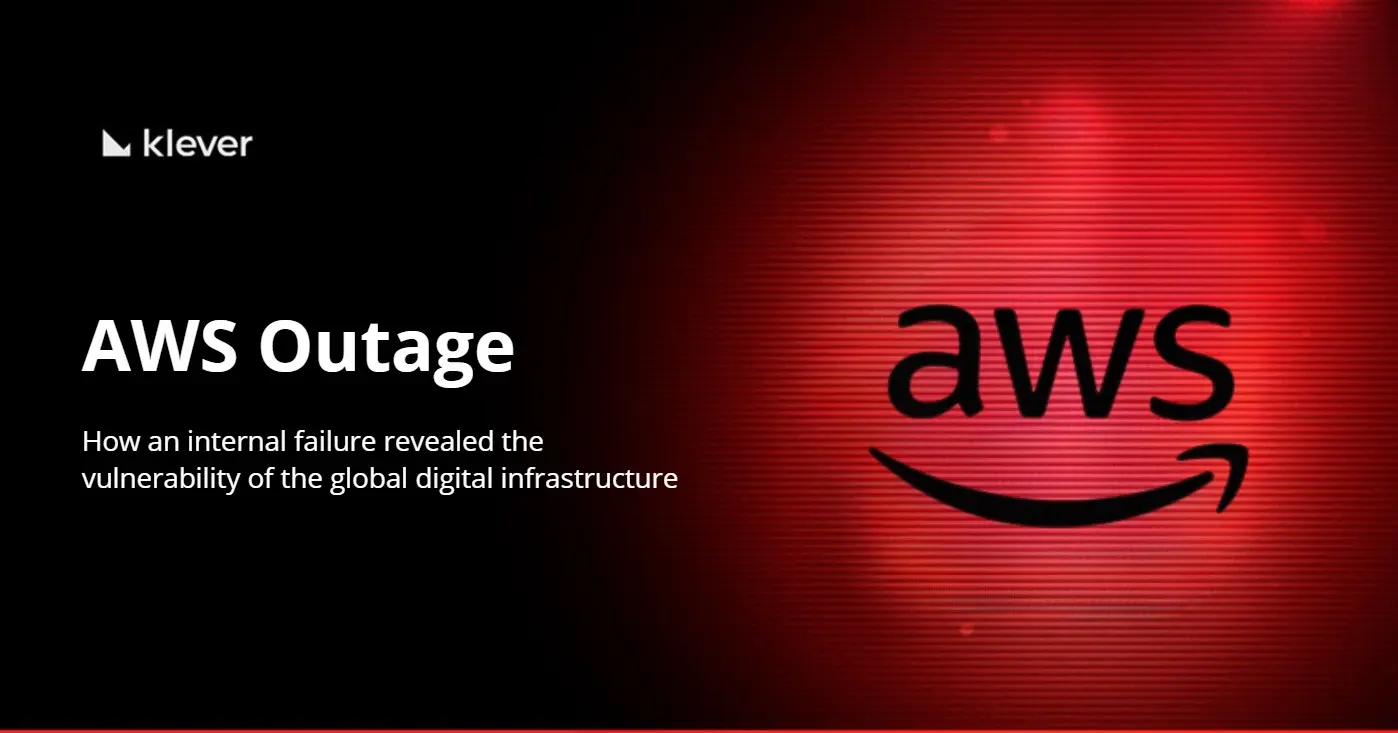
Suddenly, the internet stopped.
On October 20, 2025, an internal failure at Amazon Web Services (AWS) took down some of the world’s most visited websites — from social networks to payment platforms.
What seemed like a simple technical glitch quickly became a global warning: a single point of failure was enough to shake the entire digital infrastructure.
No hacks, no breaches — just a bug that revealed how fragile the foundation of the modern internet really is.
But why was an internal problem at a single company able to disrupt millions of users?
Here’s what happened during the AWS outage — and why it exposed the vulnerability of global digital infrastructure.
What Was the AWS Outage?
On October 20, 2025, Amazon Web Services (AWS) experienced a global outage that took down popular websites and apps such as Snapchat, Reddit, Venmo, and Fortnite.
According to Downdetector, the peak of the disruption recorded over 6.5 million error reports worldwide.
The result was a temporary collapse of part of the internet — reinforcing the risk of relying on centralized digital infrastructure.
The incident highlighted a critical issue: when the internet depends on just a few providers, collective security becomes vulnerable.
A single technical failure can compromise communications, data, and transactions for millions of people across the globe.
The company stated that services were being restored, although some regions continued to experience high error rates.
Users were advised to clear their browser cache as a temporary workaround.
How Did the AWS Outage Happen?
Contrary to initial speculation, AWS confirmed that there was no hacker attack.
The company also stated that the issue was caused by an internal failure in its DNS system, which affected the Amazon DynamoDB service.
This subsystem encountered a bug that disrupted the integrity checks of load balancers, leading to instability in network routing and DNS resolution.
Why Did the AWS Outage Have Such a Huge Impact?
The explanation is simple: centralization.
Amazon Web Services holds about 30% of the global cloud infrastructure market, serving more than 4 million corporate clients, according to a report by HG Insights.
This level of concentration makes the system highly efficient — but also vulnerable. When a failure occurs, it spreads in a cascading effect.
The Uptime Institute had already warned that relying on a single zone or provider drastically increases the risk of systemic failures.
Even large corporations that implement redundancy were affected, as many services “mirror” data or authentication processes within the same primary region.
Why Weren’t Blockchains Affected by the AWS Outage?
While the AWS outage brought parts of the internet to a halt, blockchain networks continued to operate normally.
That’s because networks like Bitcoin, Ethereum, and Klever are natively decentralized — their nodes are distributed globally and do not rely on central servers or specific regions.
Each transaction is validated and stored by multiple participants, eliminating the risk of a single point of failure.
The redundancy and immutability of blockchain data make these networks inherently more resilient to failures and coordinated attacks.
From an information security standpoint, this structure removes the risk of cascading compromise caused by a single provider.
This concept is gaining traction through DePIN (Decentralized Physical Infrastructure Network) — an emerging architecture that distributes computing power and strengthens system security.
DePIN: Decentralized Physical and Digital Security
DePIN — short for Decentralized Physical Infrastructure Network — is a new model that extends the concept of decentralization beyond software.
It connects real-world resources — such as servers, sensors, energy, and connectivity — to a blockchain network that coordinates and rewards node operations.
This creates a secure, transparent, and fault-tolerant infrastructure, where every participant contributes to keeping the network running.
What if AWS ran on blockchain?
Imagine if AWS infrastructure operated on a DePIN network:
- Each data center would be represented by a validated and incentivized node on the blockchain.
- In the event of a failure, smart contracts would automatically redistribute the workload among active nodes.
- Logs and incidents would be publicly auditable, preventing the concealment of failures.
- No government, company, or hacker would have the power to “shut down” the entire network.
This model would bring true cyber resilience — a combination of decentralization, transparency, and economic incentives.
The goal isn’t to completely replace cloud providers but to adopt hybrid models, where part of the infrastructure is decentralized to increase resilience and operational continuity.
Security Lessons: Why Decentralization Is Essential?
The 2025 AWS outage reinforced the importance of resilience and decentralized infrastructure.
- Single Point of Failure (SPoF)
A failure in a single subsystem affected thousands of companies, showing that centralization poses a global security risk.
A local malfunction can cause global downtime when everyone relies on the same provider.
- Limited Transparency
Unlike blockchains, where all data and failures are public, corporate cloud incidents are only partially disclosed — making auditing and collective learning more difficult. - Need for Distributed Redundancy
Multi-region and multi-provider infrastructures reduce the impact of failures.
DePIN models take this further by allowing physical networks to be coordinated through blockchains — providing greater transparency and fault tolerance.
The Future of Digital Security
The AWS outage wasn’t just a technical failure — it was a global security wake-up call that exposed the fragility of today’s digital infrastructure.
Businesses, governments, and developers must invest in cyber resilience, adopting multicloud strategies and exploring decentralized alternatives such as DePIN and high-availability blockchains.
The security of the future must be built on distributed, transparent, and economically aligned networks, where the failure of a single server doesn’t bring the entire world to a halt.
Decentralization, once seen merely as a technological innovation, is becoming a security necessity.




